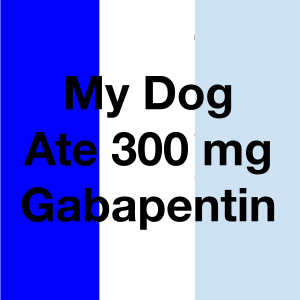
So you noticed that your dog has loose stool while on Prednisone, why might that be?
Is Prednisone the cause?
First off, diarrhea is not one of the common side effects of Prednisone, therefore it’s unlikely that your dog’s diarrhea is caused by the medication.
However, high doses or long term use of Prednisone can have negative effects on the digestive system with symptoms like vomiting, diarrhea, GI ulcers, etc.
If your dog has been on Prednisone for only a few days and has diarrhea, review your dog’s diet and also consult with your vet to review the prescribed dosage.
Prednisone, a steroid, is used in veterinary medicine to treat a variety of illnesses, including asthma-like symptoms and pet allergies.
Despite its effectiveness, Prednisone is known to have a number of potential adverse effects.
It’s helpful to familiarize yourself with possible Prednisone side effects in dogs, especially if your dog is on Prednisone.
Here’s what you need to know about Prednisone, from the right dosage to potential side effects.
What is Prednisone?
Prednisone is a corticosteroid medication that is frequently used to treat a wide range of problems in dogs, including allergies, cancers, skin rashes, various inflammatory conditions, and specific autoimmune disorders.
Prednisone acts by weakening the body’s immune system, and as a result prevents substances that typically promote inflammation.
Despite its effectiveness, Prednisone is known to have a number of potential side effects.
How is it used to treat dogs?
Veterinarians can prescribe Prednisone and prednisolone for a range of diseases, frequently as an additional form of care, as they address a variety of illnesses and disorders in dogs.
Prednisone is prescribed for both dogs and cats to treat many conditions.
It can be applied in urgent cases including allergic reactions, spinal cord injuries, and various types of shock.
This medication can be administered as replacement therapy for endocrine (hormonal) problems such as Addison’s disease, in which a dog’s adrenal glands don’t produce enough naturally occurring steroid hormones in the body.
Replacement therapy involves the administration of a substance that the body lacks, such as nutrients or hormones.
There are many applications for Prednisone.
It is used to manage and treat inflammatory orthopedic diseases, respiratory diseases with an inflammatory component.
Neoplasia (abnormal cells or cancer) is treated with Prednisone.
The drug is used to treat spinal cord injuries as well as anaphylactic shock, a potentially fatal allergic reaction.
Prednisone is also used to treat immune-mediated diseases like immune-mediated hemolytic anemia or thrombocytopenia, many CNS disorders, dermatological diseases, allergic reactions like asthma, hives, and itching, and inflammatory bowel diseases.
They may also be prescribed by veterinarians to treat shock, elevated blood calcium levels, problems of the central nervous system, and many other conditions.
Does Prednisone Cause Diarrhea In Dogs?
While diarrhea is not one of the common side effects of Prednisone, long-term use or high doses of the medication can have an adverse effect on the digestive system, resulting in nausea, vomiting, diarrhea, and GI ulcers or bleeding.
Prednisone has a fairly broad dosage range, and the right dosage is determined by the dog’s weight and the disease being treated.
In order to prevent complications and adverse effects, veterinarians often prefer to prescribe the smallest effective dose for the shortest amount of time.
The appropriate dosage for your dog will be determined by your veterinarian, who will also give advice on how to administer it correctly.
How long might diarrhea last?
Diarrhea caused by Prednisone will last as long as the drug is in your dog’s system.
Speak with your veterinarian if your dog experiences diarrhea while taking Prednisone.
If required, try to collect a fecal sample.
Your veterinarian might lower the dosage or change your dog’s medicine.
It’s also important that you actually determine the cause of your dog’s loose stool, because this is a chance that Prednisone may not be the cause.
Check if your dog ate something inappropriate from the trash or if you recently changed their diet.
What are the other side effects?
Prednisone’s most typical side effects are an increase in drinking, frequent urination, and increased appetite.
Vomiting, diarrhea, moderate behavioral abnormalities, and panting are additional side effects that may occur at larger doses and over prolonged usage.
Some of the most serious Prednisone side effects include:
- Mild behavioral changes
- Abnormally low energy
- Black or bloody stool
- Panting and vomiting
- Excessive thirst and urination
- Skin thinning and low coat quality
- Pot-belly and Cushing’s disease
- Puppies may suffer impaired growth
Is diarrhea a common side effect for most steroids?
If taken for a brief period of time or in little doses, steroids usually don’t have any noticeable negative effects.
However, occasionally they can have negative side effects include increased appetite, alterations in mood, and trouble sleeping.
Corticosteroid side effects are frequently associated with long-term usage of the medication, particularly when high doses are administered.
The dosage, kind of steroid, and time of treatment all affect the likelihood of side effects.
Here are some of the most common side effects of steroids
- Increased appetite and weight gain
- Mood/behavioral changes
- muscle weakness
- Unease and nervousness.
- Sleep difficulties
These are the most common side effects seen in the majority of patients.
Not all potential side effects are mentioned, but diarrhea is not among the most frequent side effects of steroids.
How long can a dog stay on Prednisone for?
Most veterinarians only recommend Prednisone for a short period of time because short-term use of Prednisone causes very minimal or no side effects.
The likelihood of your dog experiencing negative side effects increases the longer it is given Prednisone.
However, some severe conditions may require that a dog stays on the medication for an extended period of time.
How long a dog takes Prednisone will be determined by the vet, and it depends on a number of important things.
Long-term use of Prednisone can last for up to 3 to 4 months. Some long-term treatment with Prednisone will require a lifetime prescription
What are the long term effects of it?
Dogs who take Prednisone may experience both short-term and long-term negative effects. Even when the medication is discontinued, the long-term effects continue.
Long term effects of Prednisone:
- Diabetes: Prednisone is known to cause hyperglycemia in dogs when used long-term at high doses; this condition can last from one week to four months after Prednisone usage has stopped.
- Weak bones: cortisol can reduce the amount of calcium in bones, resulting in weak and demineralized bones. This study observed a 14% loss in bone mass in dogs treated with 2 mg/kg of Prednisone for 30 days.
- Aggressive behavior: Prednisolone-treated dogs act more aggressively, especially during mealtimes. Additionally, they are agitated and more likely to bark.
- Addison’s disease: a condition where there is an insufficient hormone production by the adrenal glands. If the adrenal glands do not produce enough of the hormones cortisol and aldosterone, this could lead to adrenal crisis, which can be fatal.
What is the correct dosage for my dog?
The appropriate Prednisone dosage for any dog depends on the dog’s weight and the condition being treated.
The dosage range is about 0.5-1.0 mg/lbs.
Your vet will prescribe the right dosage for your dog, and will also give advice on how to administer it correctly, be sure to follow the schedule.
Prednisone is generally given to dogs orally as a tablet, or liquid formulations when extremely low doses are required.
Can my dog overdose on Prednisone?
Yes, a dog can overdose on Prednisone.
Since Prednisone has a wide range of acceptable dosages, an overdose in dogs is not likely to have long-lasting negative consequences.
High doses of Prednisone in dogs usually cause gastrointestinal discomfort that improves as the medication leaves the body.
Prednisone at high doses has the potential to result in significant bleeding and stomach ulcers.
If your dog accidentally takes too much Prednisone, you shouldn’t freak out, but seek immediate guidance from a veterinarian.
Call a pet poison helpline, or try your neighborhood veterinarian or animal emergency clinic.
If an excessive amount was swallowed, the veterinarian can advise you to induce vomiting.
Additional supportive care may be required to manage symptoms.
Is it safe to be used with puppies?
Yes, Prednisone is safe for dogs, but like any medication, there are risks involved.
Prednisone is typically administered to dogs orally as a tablet, while liquid formulations are available for smaller dogs or extremely low doses.
How long does it take to work in a dog?
Prednisone takes effect quickly, in about 1 to 2 hours, and improvement in symptoms should follow. This medication is short-acting and should stop working within 24 hours.
Is there an alternative to Prednisone?
Unfortunately, a dog’s life may come to a point where drugs are required to relieve him of severe inflammation and allergies. But steroids are not always the best option, and there are safer alternatives.
When possible, NSAIDs—or non-steroidal anti-inflammatory drugs—are preferred to steroidal prescription medicines for use in animals. Aspirin and ibuprofen are two examples of NSAIDs. Another one that is frequently prescribed for pain and inflammation is rimadyl. A veterinarian may also recommend other prescription-only substitutes.
But if you have a situation where the administration of steroids is necessary, be sure to work diligently with your veterinarian to monitor and reduce any potential negative effects.






